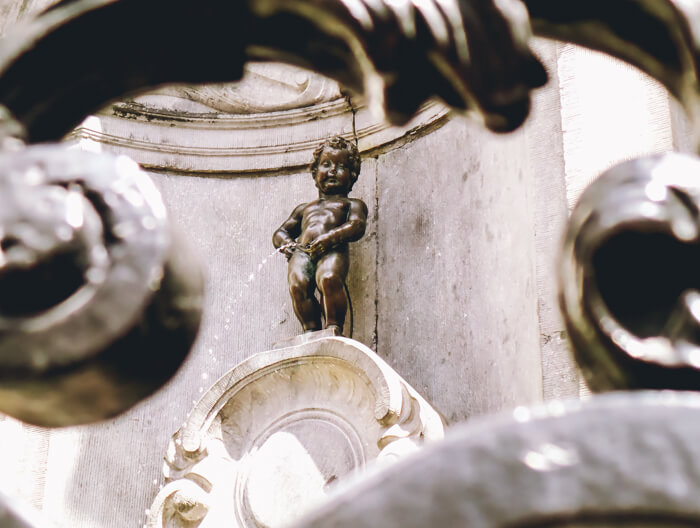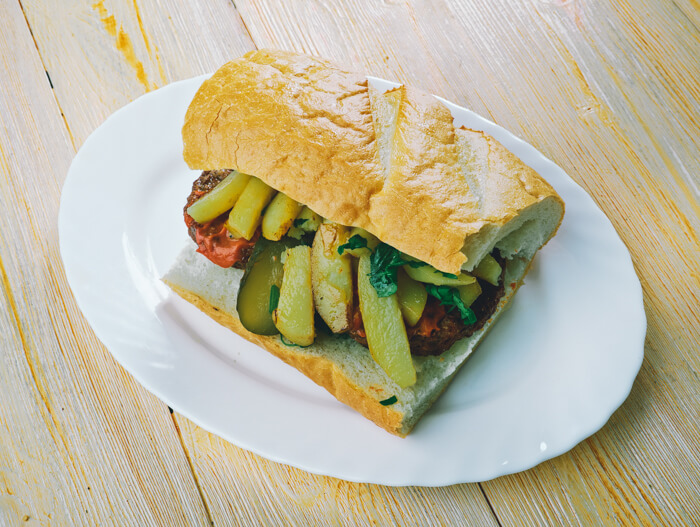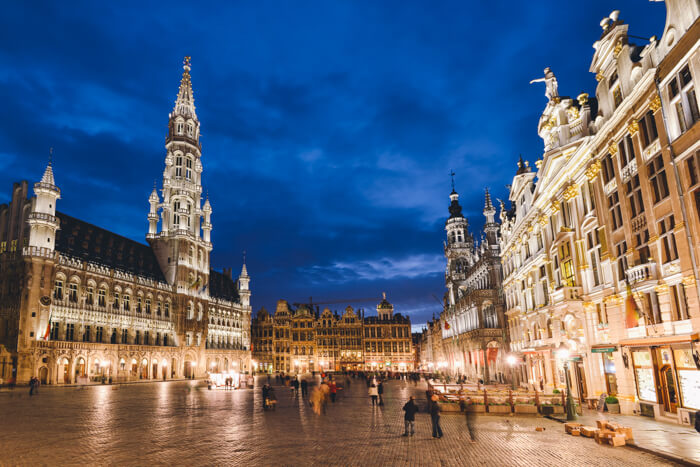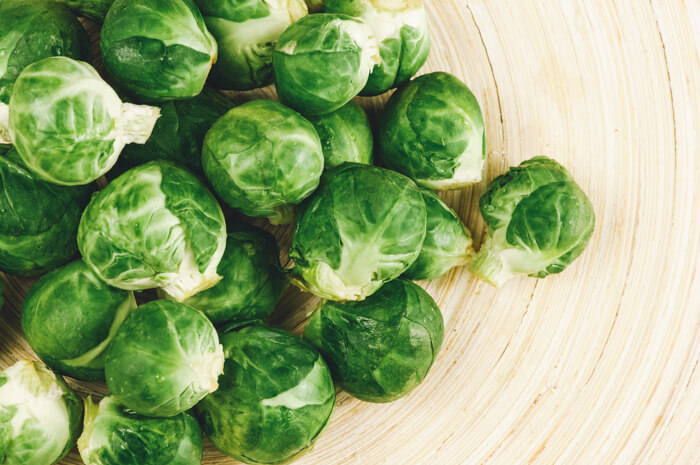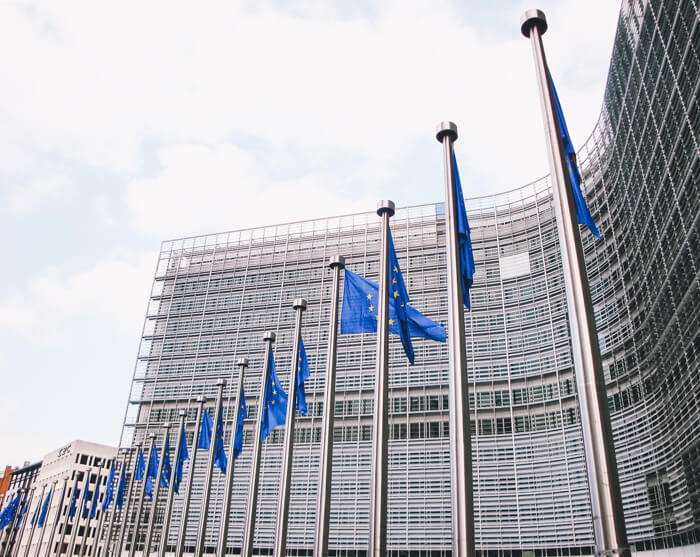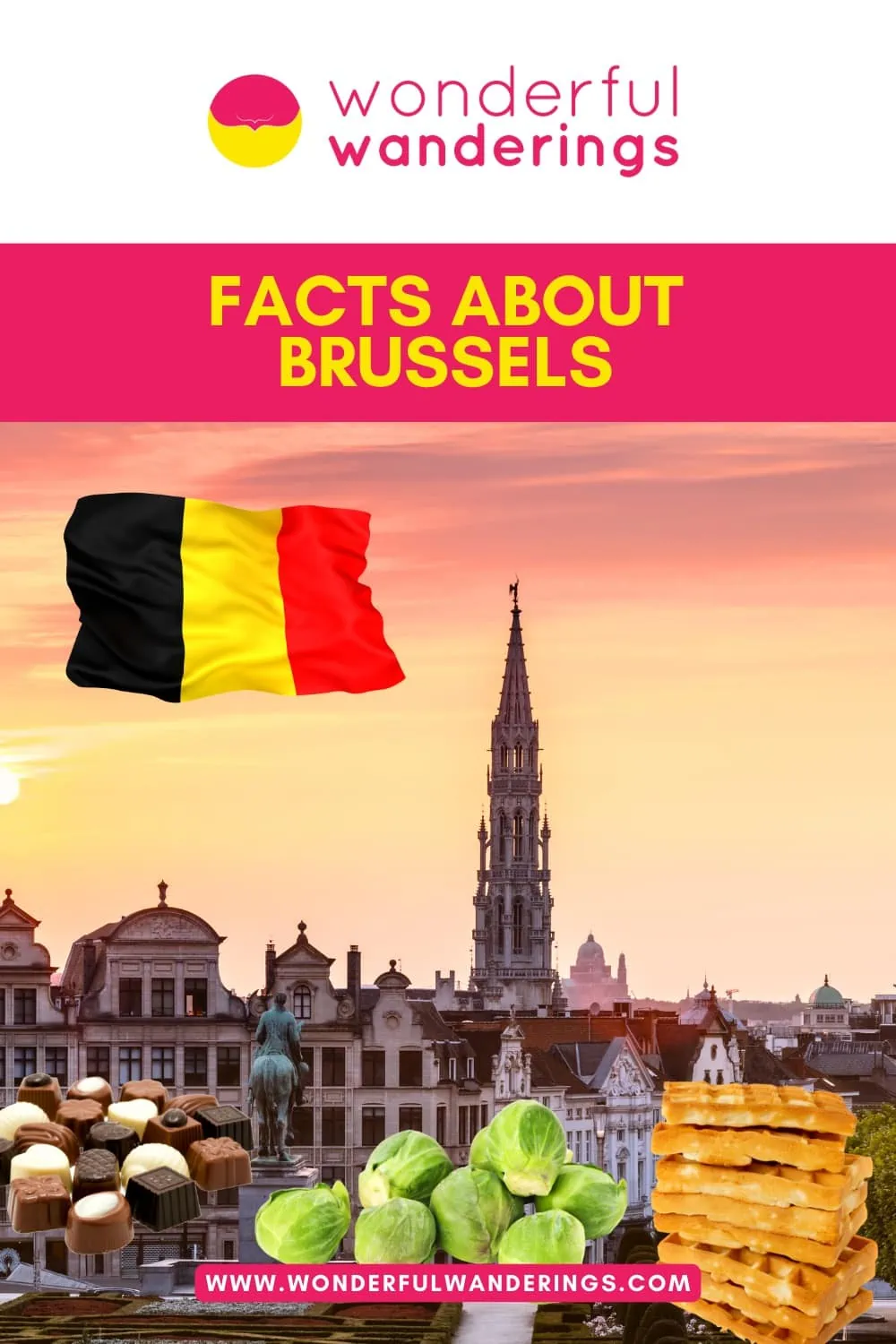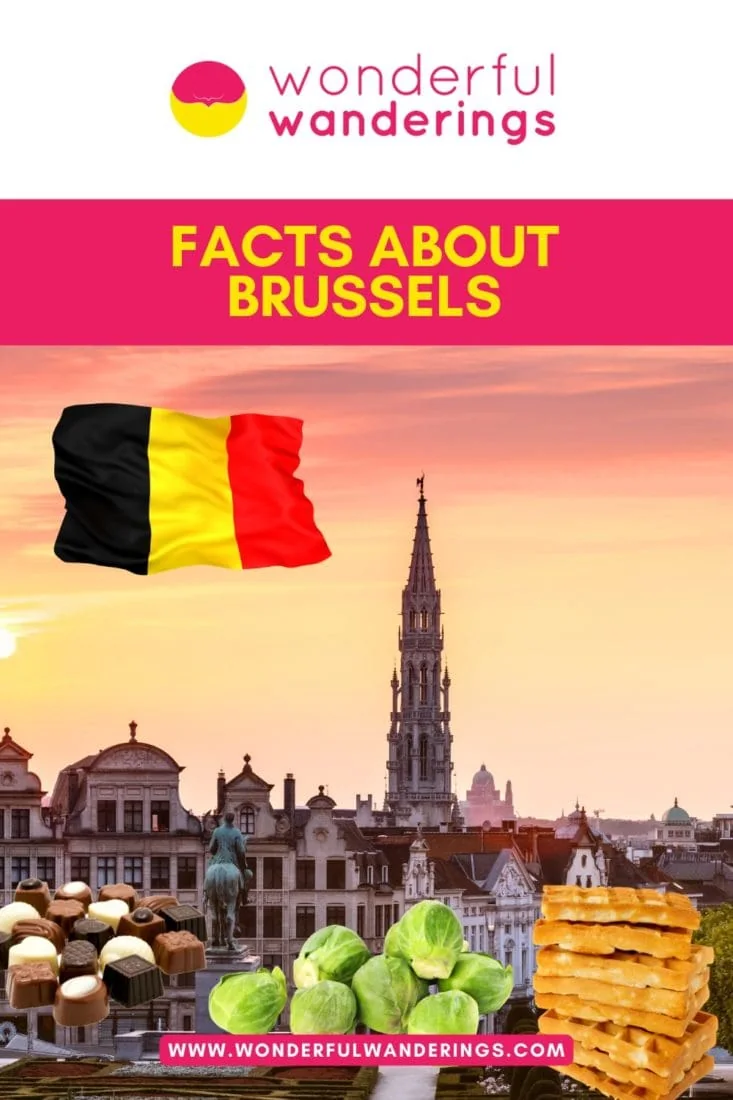Brussels, the capital of Belgium isn’t exactly the most popular capital in Europe. It’s a bit gritty, the sights are rather spread out, and it takes some time to warm up to it. But it does have a rich history and plays an important role in Belgium, Europe, and the world.
Here are some interesting facts about Brussels to get you started.
1. Official Flower on Flag
The official symbol of Brussels is a yellow iris, which is a native flower in the region. This yellow flower is depicted on the blue flag for the Brussels-Capital Region. The City of Brussels flag, however, is red and green with an image of St Michael (the Patron Saint of Brussels) slaying the devil.
2. Over 80 Museums
Brussels is home to over 80 interesting museums. There are museums ranging in focus from the sewage network, to celebrity underwear, to the history of street lights – if that’s your thing!
3. World’s Largest Chocolate Retailer
The airport in Brussels is the largest sales outlet for chocolate in the world! It exports roughly 800 tonnes annually. That’s one big suitcase.
4. 138 Restaurants Per Square Mile
There are 138 restaurants per square mile in Brussels! It’s a city famous for its food, and there are around 1,800 restaurants in total. There’s even a gourmet restaurant on a tram where you can have a 6 or 7-course meal while exploring the streets of the capital. Check the best restaurants in Belgium where you can have typical Belgian food.
5. 132 Rainy Days a Year
Now for some climate-based facts. The people of Brussels put up with an average of 132 days of rain per year! The average temperature of the city is 10.3°C.
6. Frequently Stolen Statue
Bizarrely, one of Belgium’s most beloved statues is that of a little urinating boy (a good example of Brussels’ sense of humor!). “Manneken Pis” is a 61 cm / 24 in bronze sculpture and can be found in the heart of the city, dating back to 1618 or 1619. However, the statue is so frequently stolen or dressed up that the real one had to be replaced by a replica. You can find the original in the Museum of the City of Brussels.
7. Royal Palace 50% Longer Than Buckingham
The Royal Palace of Brussels is similar looking to the famous Buckingham Palace in London. However, did you know that it is 50% longer?
8. Multiple Other Brussels Towns Exist
It’s not the only one! There are also towns called Brussels elsewhere in the world – two in America and two in Canada.
9. 27% Foreign Population
A whopping 27% of the population of the city is foreign, making it one of the world’s most international cities.
10. 3 Official Languages
There are three official languages spoken in Brussels – French, Dutch, and a small amount of German. French is the most widely spoken in the city, being the first language of around 80% of the population.
11. Birthplace of Potato Chips
The humble potato chip originated here. Now misleadingly called french fries, people first began frying potatoes in Belgium in the late 1600s. Today, there are fries on the menu at nearly all Brussels restaurants, and there’s even a fry museum! Some people (mostly students) swear by the local dish called “mitraillette” – a sandwich with fries.
12. Audrey Hepburn’s Hometown
Audrey Hepburn was born in Brussels on Saturday, May 4, 1929. She was an famous actress and humanitarian; known for classic films such as “Breakfast at Tiffany’s” and “Roman Holiday”. Audrey Hepburn is considered one of the 53 most famous people in Belgium.
13. 5th Largest Church Building
The Basilica of the Sacred Heart (also known as the Koekelberg Basilica) in Brussels is the fifth biggest church in the world. It is also the third-largest cathedral in the country and the single biggest building of the Art Deco style in the whole world.
14. Hosts EU Headquarters
Brussels is not just the capital of Belgium, but the de facto capital of Europe too. Being the headquarters of the European Union, it houses approximately 40,000 representatives from all over the continent.
15. Annual Car-Free Event
Brussels has a car-free Sunday once a year every September. From 9.30 am until 7 pm, the main streets of the city are closed to motorized vehicles. Pedestrians roam free and public art, pop-up shops, and many community activities take place.
16. Brontës Studied Here
One of the lesser-known but interesting facts about Brussels, Belgium is that the Brontë sisters came to the city to study between 1842 and 1843. Charlotte and Emily Brontë were pupils at Pensionnat Heger, a girls’ school that no longer exists but you can find a brass plaque on the former building which is now the Palais des Beaux-Arts.
17. UNESCO Site Grand Place
The Grote Markt, the city’s Grand Place is recognized as a UNESCO World Heritage Site. It’s also the best location to blend in with the Belgians and watch the world go by.
18. 14,200 People Per Square Mile
The City of Brussels has a LOT of people. There is currently an average of 14,200 people per square mile / 5,500 per square kilometer. The total population is around 180 thousand people and 1.2 million in the Brussels-Capital Region.
19. 874 Hairdressers, 647 Pharmacies
Let’s keep the interesting statistical facts about Brussels going, shall we! Did you know there are an almighty 874 hairdressers in the city and 647 pharmacies at the last count? It’s pretty much impossible to walk down a street in the Belgium capital without seeing at least one of these services.
20. World’s Largest Building in 19th Century
Built in the late 19th century, the Justice Palace of Brussels (Palais de Justice) still remains the most important court building in Belgium. It’s also absolutely huge at 26,000 square meters / 280,000 square feet. When it was built, it was the largest building in the world, and today it is still one of the biggest and most impressive edifices in Europe.
21. Originated Brussels Sprouts
Whatever you feel about the Brussels sprout, the people of the city of Brussels loved them back in the 16th century! There’s debate as to whether this is where they actually got their name but it’s widely accepted that they were originally grown by Belgians.
22. Over 800 Beer Brands
Brussels is a proud trader of over 800 brands of beer.
23. Home of Famous Historic Figures
Over the years, the city has lured in many historic figures of renown, including Victor Hugo, Karl Marx, Paul Verlaine, Alexandre Dumas, Charles Baudelaire, Auguste Rodin, and many more.
24. Europe’s Oldest Shopping Arcades
The oldest shopping arcades in Europe are located in Brussels – the Galeries Royales Saint-Hubert. The center opened back in 1847 and was the heart of luxury and elegance, attracting all the big names of the time to its theaters, cafes, restaurants, and many shops.
25. Origin of Belgian Waffles
Belgian waffles are beloved the world over. These rectangular, doughy local delicacies are everywhere in Brussels, where they originated.
26. Atomium Models Iron Crystal
One of the most striking buildings in Brussels is the Atomium. It was built in 1958 for the World Expo and it is shaped to look like a cell of an iron crystal magnified by 165 billion.
27. Founded in 979 AD
Brussels was founded in 979 AD, but facts suggest that people have settled on this spot since around 580 AD.
28. More Journalists Than Washington D.C.
As well as the European Union, Brussels is home to the headquarters of several different worldwide organizations, like NATO. Because of this, there are more journalists and ambassadors in Brussels than in Washington D.C!
29. Europe’s Largest Dinosaur Collection
If you’re interested in facts about dinosaurs – you need to come to Brussels. The Museum of Natural Sciences houses Europe’s largest hall dedicated to dinosaurs, with over 37 million species in its collection.
What are the best attractions to visit in Brussels?
There are 3 most important attractions to visit in Brussels. These are the Grand Place, the Atomium and Les Galeries Royales Saint-Hubert. Firstly, Grand Place in Brussels is a UNESCO World Heritage site featuring beautifully preserved 17th century buildings. It hosts markets, celebrations, and political events for centuries. Visitors can explore the shops and cafes of the surrounding streets. Secondly, the Atomium in Brussels is a famous symbol of the city, originally built for Expo 58. This futuristic structure serves as an exhibition space and cultural center focused on themes related to Belgium and digital arts. Over 600,000 travelers visit it annually as one of Brussels’ top attractions. Lastly, Les Galeries Royales Saint-Hubert is a historic shopping arcade constructed in 1846, combining shops and residences. It features an elegant glass roof and Renaissance-inspired design. The gallery offers fashion boutiques, chocolatiers, cultural events and more. It attracts both locals and tourists.
What are the best hotels to stay in Brussels?
There are 5 significant choices for visitors to stay in Brussels. These are the Hilton Brussels Grand Place, The Novotel Brussels City Centre, Novotel Brussels Centre Midi Station, The President Brussels Hotel and Hotel Le Plaza Brussels. Firstly, the Hilton Brussels Grand Place features air-conditioned rooms with free Wi-Fi, LCD TVs, minibars, and coffee facilities. Executive Rooms and Suites provide access to the Executive Lounge with complimentary breakfast and refreshments. It welcomes families and provides accommodations for disabled guests. Secondly, the Novotel Brussels City Centre is a modern and conveniently located hotel aiming to provide a pleasant stay with comfortable rooms, dining options, a fitness center, and business facilities. Thirdly, the Novotel Brussels Centre Midi Station is a well-appointed hotel near the train station offering comfortable rooms and amenities like air conditioning, mini fridges, a restaurant, bar, fitness center, and sauna. Fourthly, The President Brussels Hotel is a four-star hotel located in the business district near train stations, offering modern amenities and rooms. Guests can dine at the bar-restaurant and relax in the 3000 square meter garden or fitness center. Lastly, Hotel Le Plaza Brussels is a historic 4-star hotel in central Brussels offering 178 rooms with premium bath products and city views. It has a restaurant, bar, fitness center, indoor pool, conference rooms, and 24/7 concierge service.
What is the best time to visit Brussels?
The best time to visit Brussels is spring, specifically the months of April and May. Temperatures are pleasant, averaging between 8°C (46°F) and 18°C (64°F). Rainfall is lower compared to other months, averaging around 27 to 45 millimeters (1 to 2 inches). The number of rainy days is also fewer, at 3 days in April and 4 days in May. Additionally, spring has less crowds and tourists. Hotel rates and flights are more affordable. Key events happening in spring include the popular Iris Festival and Brussels Comic Strip Festival. Visitors can enjoy mild weather outdoors while avoiding summer’s heat and crowds.
Brussels experiences mild weather, with the warmest months being June, July and August. Temperatures average between 15°C (59°F) and 22°C (72°F) in the summer. The coldest months are January and February, when temperatures range from 1°C (34°F) to 7°C (45°F). Brussels weather tends to be rainy year-round. The rainiest month is December, with an average of 121 millimeters (4.8 inches) of rain.
What is the worst time to visit Brussels?
The worst time is winter from November to February, when Brussels weather is cold and wet. Temperatures are frigid in the winter months, making outdoor sightseeing unpleasant. While there are fewer tourists, many attractions and restaurants may have reduced hours or be closed entirely. Brussels does host Christmas markets in December, which can be an exception for winter travel. The chilly temperatures and frequent rainfall make winter an unfavorable time for most visitors.
PIN FOR LATER

